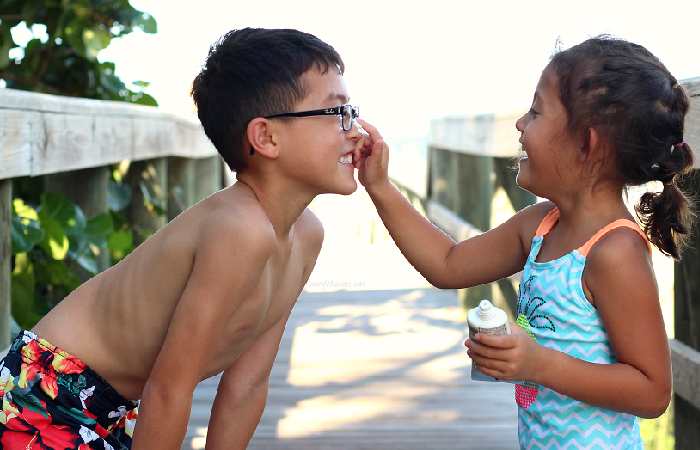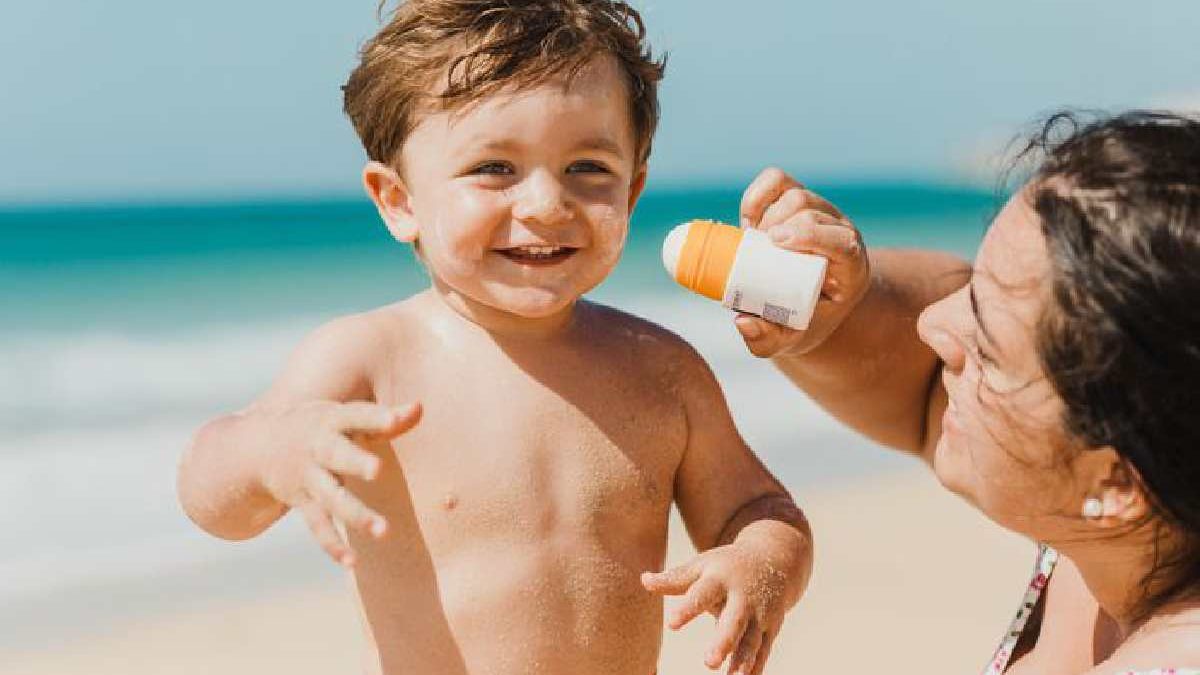Table of Contents
How to choose and use Sunscreen?
Sunscreen for Children – With all the sunscreens available on the market, choosing the right one for your child can be difficult. But the most important thing when using Sunscreen is to know how well it protects the skin against ultraviolet (UV) rays.
What type of Sunscreen is the best?
There are three top things to look out for when shopping for Sunscreen. Check on the label that the Sunscreen:
- Also, have an SPF (sun protection factor) of 30 or higher
- protect against both UVA and UVB rays (a “broad spectrum” sunscreen)
- It is waterproof (protects children while they are in the water for 40-80 minutes)
Different types of Sunscreens
Sunscreens can come in several different types: creams, gels, sprays, and sticks. Creams work great for areas of dry skin, bars help around the eyes, and gels work well on hairy areas (such as the scalp). With spray protectors, it’s hard to tell if enough has been applied; In addition, there is the possibility that children will breathe the protector. Some sprays are also flammable, so sparks and open flames should avoid when used.
Other things to consider
- Do not use sunscreens that contain PABA as they can cause skin allergy.
- For sensitive skin, look for products whose active ingredient is titanium dioxide.
- Teens or tweens who want to use a self-tanner should get one that also has UV protection (many don’t or have a tiny amount of UV protection).
- Some cosmetic products contain Sunscreen, but they do not usually offer enough protection against the sun. So make sure your teen puts on Sunscreen before putting on makeup.
Babies below six months should not expose to the sun. When you go outside, dress your baby in light clothing that covers her arms and legs; And do not forget to put on a cap with a visor. If it is impossible to avoid the sun, you can use a small amount of Sunscreen on the parts of the baby’s body exposed to the sun, such as the hands and face.
How, when, and where to use Sunscreen?
For Sunscreen to perform its function well, it must use correctly. Make sure that:
- Apply Sunscreen every time your child is out in the sun. For great results, apply sunscreen 15 to 30 minutes before your child goes out in the sun.
- Don’t forget about the ears, the hands, the feet, the shoulders, and the back of the neck. Lift the straps of swimsuits and apply Sunscreen underneath (in case the straps move with the child’s movement). Protect her lips using cocoa butter with an SPF of 30.
- Be generous when applying Sunscreen: Dermatologists recommend using an ounce (enough to fill a typical medicine shot or jigger) when covering areas of skin that will expose you to the sun.
- Apply Sunscreen frequently, about every 2 hours. Reapply Sunscreen after your child has been sweating or swimming.
- Water reflects and intensifies the sun’s rays; therefore, children need long-lasting protection. Apply a waterproof sunscreen if your child will be swimming or in contact with water. Water-resistant sunscreens can last up to 80 minutes in water, and some are sweat-resistant as well. But even if the sunscreen label says it’s waterproof, be sure to reapply the sunscreen when your child gets out of the water.
- Don’t try to make sunscreen bottles last. Instead, stock up on several at a time, and throw away sunscreens that are expired or that you bought more than three years ago.
Who needs to use Sunscreen?

All children need protection from the sun’s rays. The American Academy of Dermatology (AAD) recommends that all children wear Sunscreen with an SPF of 30 or higher regardless of skin tone. Although dark-skinned people have more protective melanin and tan more efficiently rather than burn, tanning is an indicator of skin damage from the sun. Dark-skinned children can also get painful sunburns.
And remember always to be a good example. Using Sunscreen by an SPF of 30 or higher regularly and limiting the time spent in the sun will moderate your risk of skin damage and teach your child how to protect themselves well from the sun.
How to choose sun protection?
The sun protection factor (SPF or FPS) indicates the number of times in the sun without burning multiplies.
The Sunscreen
- Factors 15 to 25 are medium protection.
- From 30 to 50, they offer high protection.
- More than 50 (or 50+) are very high protection creams.

